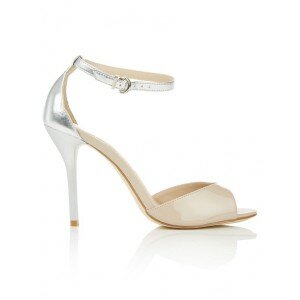-
Upcycle: Decorative Table Overlay
Liven up a tired-looking table in your home with some colour therapy
21 October 2014
You will need
- 44cm pressed-wood table
- sandpaper
- PVA paint in dark blue-grey
- soft paintbrush
- craft paint in green, yellow, blue and red
- artist’s brush
- 2m sheet aluminium foil (available from hardware shops)
- permanent marker
- old scissors
- compass
- double-sided tape
- cutting board
- dressmaker’s pattern wheel
- upholstery tacks
- hammer
- pot scourer
- soft cloth
- glass paint in green, yellow, blue and red
- Flower template
To make
1 Sand the top, legs and sides of the table. Apply two or three coats of PVA paint. (We used Plascon Nautilus.) Allow each coat to dry before applying the next and sand lightly between coats.2 Paint small flower and leaf designs onto the legs using craft paint.
3 Place the tabletop onto the foil and lightly trace two half-circles using a marker. (The foil isn’t wide enough to cover the entire tabletop in one go.) Cut out the two pieces using an old pair of scissors, with a 1.5cm border for folding over the edge and for the overlap.
4 Draw a 35cm-diameter circle on foil and cut out without including a border. Also cut a long strip of foil 1.5cm wide to fit around the circumference of the table (or cut a few shorter pieces that can be joined).
5 Place the flower template in the middle of the 35cm foil circle on top of another, smaller piece of foil, using a piece of double-sided tape to hold it in place. Place both pieces of foil on the cutting board and run a dressmaker’s pattern wheel over the design. NOTE You only need to make light indentations, so don’t press too hard, or it will make holes. Cut the floral design out of the smaller piece of foil, adding a 5mm border.
6 Run the dressmaker’s pattern wheel around the outside of the 35cm foil circle, leaving a border measuring approximately 5mm.
7 Join the two half-circles of foil using double-sided tape. Place the 35cm circle on top and mark off to form the border around the edge of the table. Draw triangles in the border using a marker, then place on the cutting board and run the dressmaker’s wheel over the pattern.
8 Attach strips of double-sided tape to the back of the foil top for the table, position on the tabletop and press down firmly. Also attach double-sided tape to the back of the overlap, cut V shapes into it and fold down to ensure that the overlap will lie flat.
9 Attach double-sided tape to the back of the 35cm circle and position it on the covered table. Do the same on the back of the floral design and position it in the middle of the table.
10 Lay the long foil strip on the cutting board, mark out a wavy pattern with a marker and run the wheel along the pattern. Attach the strip of foil around the edge of the table using double-sided tape, neatly covering the overlap.
11 Hammer upholstery tacks onto the design and around the edge of the table, making sure that they are spaced at regular intervals.
12 Lightly scour the tabletop with a damp pot scourer, then wipe down with a soft cloth. Apply glass paint to the preferred areas using a soft paintbrush, or refer to our photograph. Use long, even stokes and plenty of paint as it bubbles easily. Leave to dry overnight.
13 Paint details onto the glass paint using craft paint in the same colours. Allow to dry completely.
Text and image: Ideas magazine






